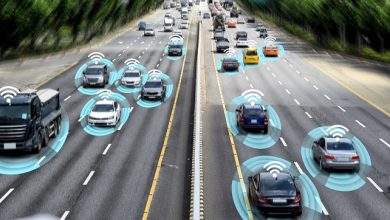CerebrumX is laser focussed on North America to monetise connected vehicle data

CerebrumX, was founded in August 2020 . It collects connected vehicle data from various OEMs and processes it in its platform to generate meaningful insights for businesses. It received its first funding in March 2021 and has so far raised over US$ 5.5 million. It counts Blackberry, LG Technology Ventures and Cerence as some of its institutions investors.
Telematics Wire in an interaction with Sumit Chauhan, Co-Founders and COO of CerebrumX, explores about the product and new growth region.
Sumit is based out of Princeton, New Jersey. Amongst various responsibilities, the important ones which he looks at are- investment, sales and marketing, business development and finance. Before starting CerebrumX, he was with Harman, leading the Harman India business at one point of time. Prior to this, he worked with Nokia Siemens and KKR Company.
TW: What was the reason behind starting CerebrumX?
Sumit: Co-founders and I, were working in Harman, where we were enabling the OEMs to collect connected vehicle data. Most of our work was involved in terms of how do we collect data and help the OEMs.
Somewhere in the process, we realized is that its not enough. We need to have a solution outside the car as well in terms of when the data gets to the cloud. Further there is need to monetise it. Or utilise that data for various verticals like insurance, fleet, aftermarket, smart cities, even infrastructure companies.
To fulfil these needs, we came forward and setup CerebrumX in August of 2020.
TW: What is market area for CerebrumX?
Sumit: As of now we are laser focused on North America as a market. A couple of reasons for that- firstly, it is the concentration of connected vehicle, which is extremely high in North America versus any other place. It’s close to 100% in North America. The new vehicles that are being rolled out, almost all those vehicles are connected, barring some issues with supply chain and connectivity chipsets in the last one year, almost all are connected vehicle.
Also, I would say, the demand for the connected vehicle data amongst the various usage verticals that I mentioned, is much higher in North America.
TW: Amongst the various verticals which you mentioned which one is the most important?
Sumit: I think the most significant vertical for us as of today is fleet.
TW: Can you share something about your ADLP platform?
Sumit: In terms of the platform, which is the augmented deep learning platform(ADLP), we spent a good part of the first two years on it. It’s a completely homegrown platform. And thats where the India office comes in. We have close to 32 people working out of that office and the entire engineering and the product development happens out of India. Our development centre is in India, primarily for talent, and also for cost advantage which we get.
We have filed close to about 10 patents on ADLP platform. It’s an industry first for many reasons, the most significant of which is that it’s the first data management platform for connected vehicle. Also, it is the industry first in terms of real time data management platform for connected vehicle. We get the data in near real time; in matter of milliseconds from the OEMs.
TW: What is the basic operation which your platform facilitates?
Sumit: In short, we buy data from the OEMs with whom we have contract, covering almost all of the top 10 OEMs in North America. In other words, we have a coverage of close to 85 to 90% of connected vehicle in North America. And once we have processed the data through our ADLP platform, we make it available to our customers on the other side.
TW: How do you make the data homogenous to be processed by your ADLP platform?
Sumit – This is where an aggregator like us becomes very important. Because every OEM has different kinds of nomenclature for the data that they’re collecting. Even the number of parameters that are being collected by a Ford versus GM versus Toyota is very different. And also the frequencies at which they are collected is different. Sometimes even the unit of measurement of that parameter is different.
So, what we do is, we homogenize all data as they come into our ADLP platform. And then we expose the homogenised data to the user segment.
TW: To what percentage can your Fleet Connect bring down the TCO for a fleet operator?
Sumit: Before this, let me share how we reduce the TCO. We reduce the total cost of ownership through our proactive approach, by giving out messages to the fleet operators in terms of their maintenance needs. So, if your battery is going to give out, or if your tires are going to give out, we can give early warnings to the fleet operators so that the maintenance cycles can be met effectively and you save money. Secondly, because we can provide better monitoring of the drivers, it helps reduce the cost from two fronts- they drive safely because they know they’re being monitored. This helps reduce insurance cost for the fleet, as you can prove to the insurance company that drivers are better now. Better drivers are safer drivers. Beyond this, things like oil pilferage, vehicle detour are monitored and prevented.
We are in our early days, as we’ve just been out in the market for about nine to 12 months in terms of our solution. But in our limited exposure, TCO reduction has been anywhere between 10% to 25% within the first three months of operation.
TW: Does your products- Fleet Connect, Drive Connect and Mobility Connect depend on ADLP or they cannot work in isolation?
Sumit – Let me first define these products. Product in our context is basically two things one is the set of API’s that you will call from ADLP to get data. They are tightly connected to ADLP. And the second part of the product is the algorithms for user segment. Like for insurance, you need a driver score, for fleet, you actually need more like vehicle health, some maintenance related etc. So, Fleet Connect, Drive Connect and Mobility Connect are basically separate algorithms, we have inbuilt as part of ADLP which provide the analysis. It’s a very tightly integrated with ADLP. Also, a lot of data has been processed by our ADLP which makes it is fully trained for all practical uses in North America.
TW: Any CrebrumX initiative in India, apart from your research and development centre?
Sumit: In India we are working with a couple of OEMs. They have used our data and our platform in slightly different way from North America. Not because there is any limitation in the platform, but just because their needs were slightly different. They wanted to utilise our data in a certain way.
We are open to business opportunity. Lets say somebody wants to launch a UBI based insurance, and they have a viable commercial proposition to launch the service in India, our platform is 100% ready.
We also need to keep in mind the some of the limitations in India. First, its the zip codes or the PIN codes, which are not well defined. How you will find a house, which does not have an exact GPS location to it. On a larger scale of things, let’s say I want to come up with a solution where I want to figure out if somebody was driving in Delhi versus Haryana versus UP; sometimes those boundaries can be blurred. The navigation solutions that are available in India, whether it is from MapmyIndia or Google Maps, they have limitations in navigation. The other limitation is the number of parameters. At least in our experience, the number of parameters that the OEMs are collecting today, are far lesser than in North America or in Europe. But the biggest out of this all is the percentage of connected vehicle in India is extremely low. Out of 100 vehicles that are sold, probably five to seven vehicles are the ones that are connected. And on top of that, even those vehicles which are connected, only few stay connected after the first three/two years.



